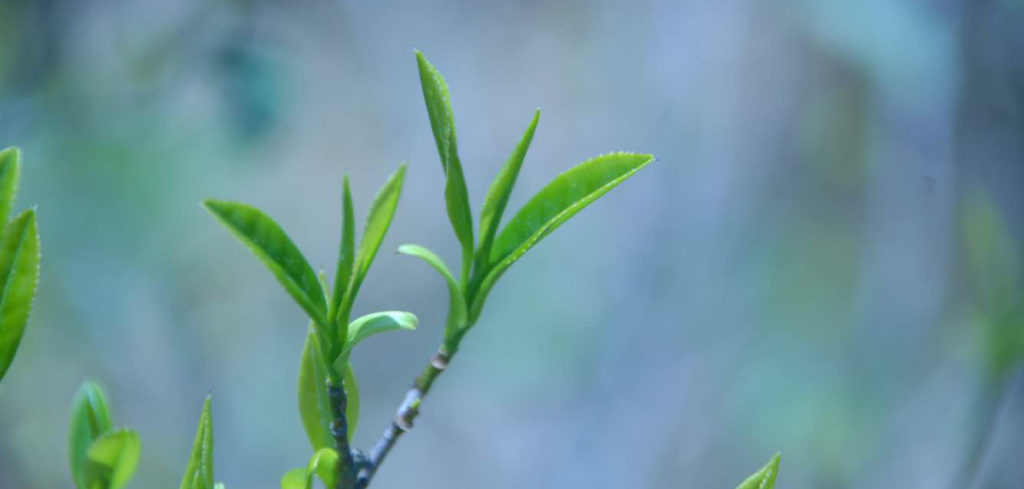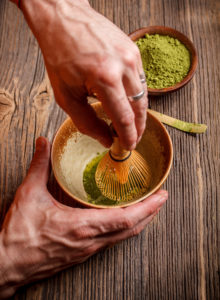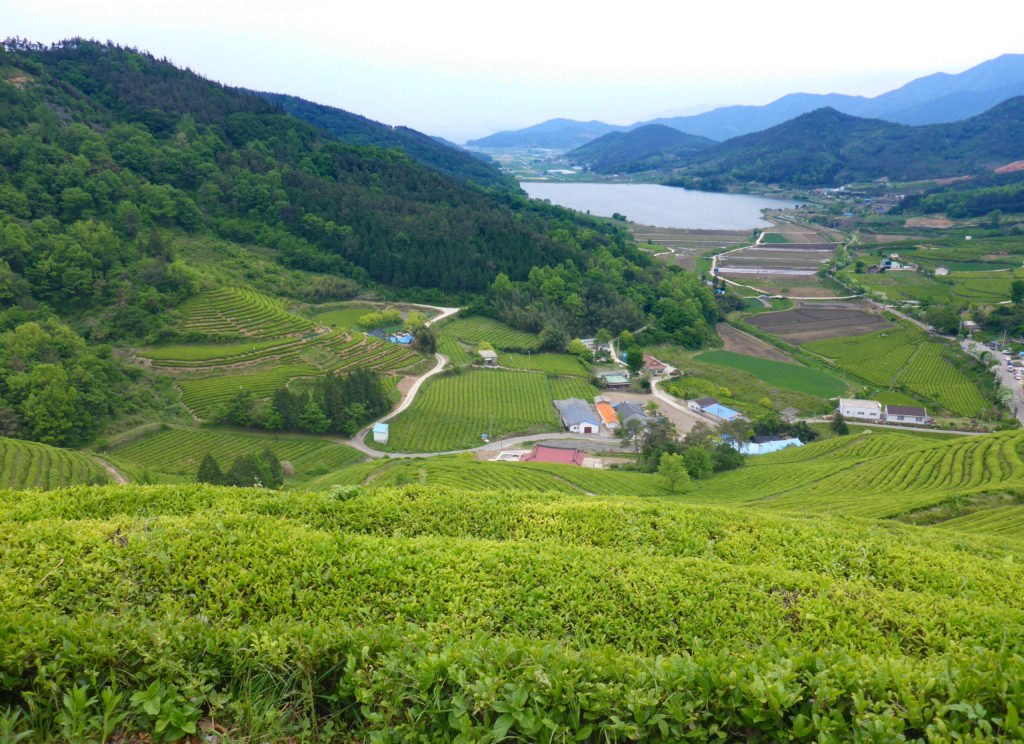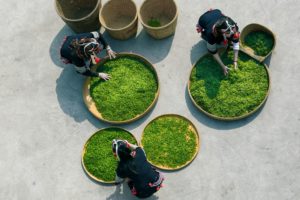
Green means go! It is the color of currency and commerce. It is bright as spring and brings us luck in a shamrock. It brings a sense of calm sailing a vast green sea.
“In Asia, the color green represents positivity, and happiness — all appropriate adjectives to describe the current state of the global green tea market,” writes Sam Molineaux in World Tea News.
Futurists attach a green halo to advocates of environmental awareness and sustainable earth-friendly practices. Green tea is newly sprouted grass, budding leaves supporting a habitat brimming with life.
Health professionals attest to tea’s plant-based benefits.
The leaves of the tea plant contain more than 600 interactive chemical compounds. These are largely preserved during green tea processing, delivering the highest concentration of polyphenols over which EGCG rules as the benevolent king. Tea is composed of 20-45% polyphenols by weight, of which 60-80% are catechins a class of antioxidants (EGCG) that help prevent cell damage.
Studies demonstrate that green tea improves brain function and physical performance.
The reasoned and well-researched WebMD site cautions that “no one food will protect you from disease” but green tea improves blood flow and lowers cholesterol, eases high blood pressure and improves memory.
It’s no magic bullet for weight loss, but “all things being equal, if you substitute 1-2 cups of green tea for one can of soda, over the next year you’d save 50,000 calories (equal to 15 pounds).”

“It’s not that easy bein’ green,” sings Kermit the web-footed Muppet. “It seems you blend in with so many other ordinary things, And people tend to pass you over,” croons the famous frog.
Green is not for everyone.
But green tea now accounts for one-third of total global production, compared with less than a quarter a decade ago. It is the dominate style in Asia with distinct methods of processing embraced by China (which pan fires its green tea) and Japan (which prefers to end the lives of leaf-decaying bacteria with steam). In the West green tea is often paired with floral flavors (Jasmine green tea is the world’s No. 1 selling flavored green tea). Fruits like Kiwi balance the distinctive grassy taste of Japanese steamed green tea and Matcha is simply finely powdered dried green tea leaves.

Those who have experienced a “bitter” green are not preparing it correctly. The color green comes from a high concentration of chlorophyll in the tea leaves, a bitter tannin that flows into your cup in quantity at high temperatures. The secret to making sweet tasting green is to brew greens at temperatures too low to extract tannin. Brewed around 160-degrees (70C) a green tea will taste crisp, delicate, and fresh. The same tea brewed at 212-degrees (100C) is undrinkable.
Keep the Steep Short and Sweet
The other culprit is time. Timers are made for brewing black teas. The 5-minute and even the 3-minute settings are much too long. Try 1.5 minutes or 2 when you first taste a newly purchased green. In China tea artists steep fine-quality greens for as little as 15 seconds.
The best green teas remind you of spring so dial back the temperature and stick with a quick steep. You will know the right combination when the tea smells like spring in the cup (my favorite in spring is Anji Bai Cha).
Greens are delicate so avoid tap water as it can react with chemical compounds in the tea, resulting in a sour taste. Distilled water actually prevents green tea from releasing its flavor, so use filtered water or bottled spring water to improve your brew.
The simplest greens are sun-withered, faintly oxidized. Many are consumed soon after plucking.

In Japan fresh leaves are rested (withered in breezy shade) for 1-2 hours until limp. The next step is to lightly steam the leaves in a bamboo steamer. Timing varies from 30 seconds to several minutes. The leaves emerge looking like spinach and must then be mashed and turned. Once removed from the heat, the leaves are placed on a square of muslin or cotton. The ends of the square are then drawn into a ball and the mass (generally around one kilo) is wound tight by rolling repeatedly in a circular motion. Twisting the ends of the square tightens the ball. Compressing the ball of tea shapes the leaves and removes moisture while releasing enzymes that transform the tea’s flavor, making it more complex and pleasant. The tea is then either sun-dried or baked at 250 degrees Fahrenheit (120C) for 15-25 minutes.
Check out this time-lapse video of the greening of Japanese tea.
In China the withered leaves are tossed into a giant wok, heated by gas or wood. Standing near is a tea maker inspecting the coals, watching the steam rising from the leaves as they hit the metal. The man or woman tossing the leaves is an artist looking for just the right color and smell. Tossing the leaves cools and aerates, a technique that prevents singeing.
Oxidation is halted when the moisture content is low and oxidation approaches 12% on a scale that assigns green teas a value from 2% to 14% oxidation; green oolongs (Taiwan style) range from 15-35%. Chinese oolongs are more fully oxidized at 25-50%. Black teas begin where dark and roasted oolongs end, at approximately 80% oxidation. Furnace-fired teas are fully oxidized.
There are thousands of variations and many additional steps culminating in twists, pearls, broken or whole leaf teas but the distinctive taste of green remains. Enjoy the special Green Tea issue.
Download this handy guide for brewing green tea.
And remember, Keep in Cool (PDF)


Dan Bolton is editor and publisher of Tea Journey a collaborative venture, self-financed by editors, writers, tea consultants, tea educators and tea experts globally. Think of us as a digital caravan of story tellers who travel to origin and return with authoritative, elusive and exclusive articles, photos and video that will help you to discover your tea destiny.
It is truly a well-researched content and excellent wording. I got so engaged in this material that I couldn’t wait to read. I am impressed with your work and skill. Thanks. ceremonial grade matcha green tea